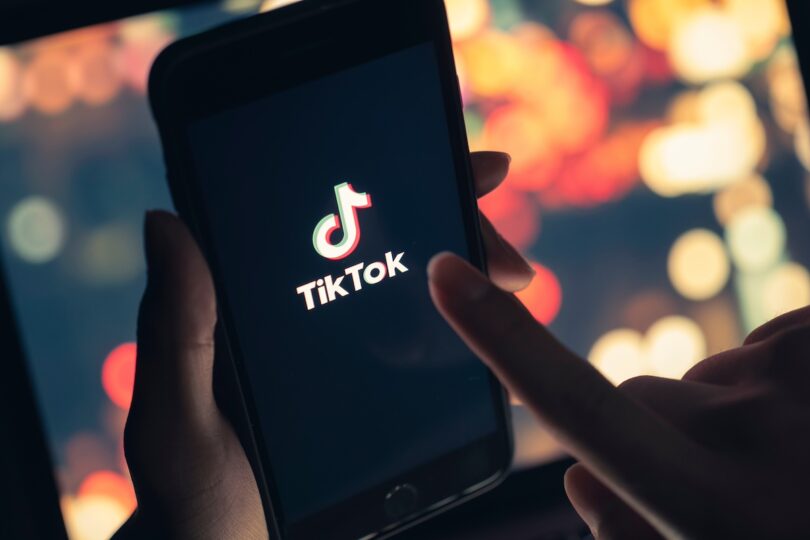Updated April 24: President Biden signed a bill that could lead to a nationwide TikTok ban.
Recent news about bipartisan legislation that would compel TikTok’s Chinese parent company to sell the social media app or see it banned in the United States is generating buzz among communicators. With a final vote of 352–65 in the U.S. House of Representatives on March 13 and President Biden’s pledge to sign the bill if it reaches his desk, TikTok’s future is in limbo.
Despite impending legislation, influencers are leveraging their large followings to share stories of how TikTok has bolstered their businesses and their ability to express themselves. Some influencers are waging campaigns of their own to support TikTok’s strategy of having its users overwhelm members of Congress with calls and messages, urging lawmakers to stop the possible ban.
Since its U.S. release in 2018, TikTok’s effect on mass communication and business has been significant. The app now boasts more than 170 million users in the United States. The platform’s user base increased during the pandemic years and continues to help shape viral trends and social causes today.
Early adopter brands that noticed the platform’s growing popularity have continued increasing their TikTok influencer collaborations. In 2019, Chipotle’s #GuacDance campaign was an early viral success on TikTok. Influencers helped the restaurant chain sell 420,000 pounds of avocados in its dishes for National Avocado Day. Chipotle has since racked up 2.3 million followers and more than 53 million likes on TikTok alone.
Also in 2019, Walmart’s #DealDropDance campaign included a range of influencers to promote its Black Friday deals, inspiring a dance challenge that garnered billions of views.
For communicators, a TikTok ban could be disastrous — or inconsequential.
For some brands, a TikTok ban could significantly alter the influencer strategies central to audience engagement campaigns. Brands with investments in influencer relations campaigns should consider several potential outcomes, including a total ban on TikTok and the possible need to shift those efforts to other platforms.
While children and young adults still account for most of TikTok’s user base, not every brand is interested in reaching this audience. Companies that target an older audience, like a B2B, might find a TikTok ban less critical or even inconsequential to their strategy.
A TikTok ban may present new opportunities for some organizations on other social media platforms. According to the Pew Research Center, about three-quarters of adults under 30 use multiple social media sites. However, a ban could prove disastrous for the subset of brands that rely on TikTok influencers to drive sales. Those brands would be forced to shift their influencer campaigns toward other platforms, which result in campaign shutdowns and unexpected costs.
If TikTok is sold rather than banned, a U.S. buyer could satisfy lawmakers by eliminating the risk posed by policymakers. Just as Elon Musk purchased Twitter (now X) in 2022, the next owner of TikTok may be a wealthy entrepreneur. Corporations such as Microsoft and Walmart have also shown interest in acquiring the platform. Under one of these scenarios, the new owner would likely not upend the bulk of TikTok’s revenue, which is generated through e-commerce heavily backed by influencer engagement.
Prepare your team, your strategy and your influencers.
If TikTok is banned, the process likely won’t happen overnight. As developments about the app’s future are reported, communicators should follow those updates and be ready to adjust their influencer strategy. (Media outlets have pointed out the bill’s uncertain future.)
Set aside time to discuss the latest headlines with your team. Try to track your audience’s potential migration to another platform, and look for influencers who might start jumping ship early to bolster their following on another platform.
Every platform offers a different user experience. For example, campaigns designed for TikTok would need to be altered on Snapchat. Consider what a TikTok campaign would look like when reconfigured for another platform. Consider creating a beta influencer campaign and then soft-testing it with your teams. Determine those elements that might need to change and what tagging, hashtags and emojis mean from one platform to the next.
Since marketing budgets are sometimes set years in advance, organizations that dedicate funds to influencer relations on TikTok may want to start running ghost budgets in parallel as a Plan B. Seeking budget approvals and firming up influencer contracts early might save time in the future.
As you prepare for TikTok’s sale or outright ban, don’t give up on your influencer network. Consider working together on Plan B.
Many influencers have accounts on multiple platforms. Determine a strategy to repurpose an existing TikTok influencer campaign for another platform, such as Instagram or YouTube. Ask your influencers how they might reenvision a TikTok campaign on their other accounts.
If repositioning your influencer list becomes the best course of action, whether on TikTok or elsewhere, don’t just look at followers; look at engagement. In many cases, so-called “nano-influencers” (those with approximately 1,000 followers) can be as valuable as celebrity influencers with a million or more followers.
These smaller but still influential voices also deserve a chance to move with your brand. As the social media world shifts, working with nano-influencers could be a positive opportunity for everyone involved.
Joshua J. Smith, M.S., is an assistant professor of public relations at Virginia Commonwealth University’s Robertson School of Media and Culture.
[Photo credit: stock.adobe.com]






